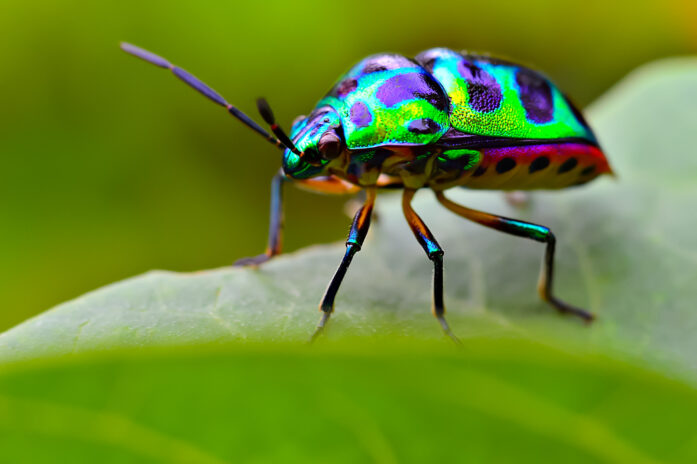Understated Elegance: The Uniqueness of Human Biology
by Patricia Babin
During the international coverage of Prince William and Kate Middleton’s wedding, I heard a commentator describe the style of the bride’s gown as “understated elegance.” This phrase is also an apt description of the subtle cellular mechanisms used to create the extraordinary uniqueness of human biology. Before 2001, scientists thought human genes would be sufficiently numerous, complex, and different enough from other species’ genes to account for things like human cognitive ability—but researchers were in for a surprise.
When the results of the human genome sequencing project were published in 2001, one of the most surprising results was the discovery that the number of genes in the human genome is amazingly small—only 26,588.1 A mere 1.1 percent of the DNA is devoted to exon sequences, while 24 percent of the DNA consists of intron sequences; the remaining 75 percent consists of noncoding DNA. Based on what scientists knew regarding human cell biology and the number of proteins that should be needed to execute it, they expected to find at least several hundred thousand genes in the human genome.
A few years later, when the chimpanzee genome was sequenced, more surprises turned up, including the very high level of similarity between human and chimpanzee gene sequences. Twenty-nine percent of the genes are identical; and for those that are not identical, the average difference would result in a protein with only one amino acid change in the human version.2 Supporters of evolution were quick to point to the results as evidence for the evolutionary paradigm as exemplified by this statement by David Perlman, science editor for the San Francisco Chronicle:
That is an understandable response for evolutionary activists, but to those scientists who need to understand the biological basis of human uniqueness, the results were unsatisfying to say the least.
First, the Human Genome Project revealed an unexpectedly small number of human genes, then the Chimp Genome Project showed a significant degree of similarity between human and chimp genes. How can we account for the gap between the expectations of scientists and the results of these major endeavors? Was the analysis of the sequences wrong or were the expectations of biologists wrong? Neither. The current estimate for the number of genes in humans remains in the range of 20,000 to 25,000 (the number of genes identified in 2001 was a little higher). Furthermore, scientists still expect that the number of unique proteins in humans is very large. Biochemist Ole Nørregaard Jensen remarked, “It appears that the number of different protein molecules expressed by the 20,000 to 25,000 protein-encoding genes is probably more than one million.”3
So, how do we reconcile the small number of genes with the large number of proteins? Cutting-edge research often reveals just how much we don’t know, and that is certainly the case in the instance of the genome sequencing projects. The results caused scientists to rethink basic assumptions. For example, prior to 2001, they knew that the cell could produce more than one protein from a set of exons through processes like mRNA editing and alternative splicing, but they didn’t believe these processes were utilized to a great extent. The genome-sequencing results caused a reassessment of that belief. Scientists also had to come up with a brand new hypothesis to account for human-chimp differences. They’ve risen to the challenge. In the years since the completion of the genome projects, the scientific literature has been replete with details of subtle mechanisms that result in human biological uniqueness.
I’d like to share with you a sample of quotes from recent journal articles in which scientists clearly identify their awareness of humanity’s obvious uniqueness compared to other species and the absence of immediately evident explanations for that uniqueness. The statements quoted are from the papers’ introductory portion where the authors identify the question for which their research will provide an answer. Rest assured, there are plenty of answers, but for now, let’s view the problem from the perspective of the scientist.
- “We know relatively little about the degree to which changes in epigenetic profiles might explain differences in gene expression levels between primates.”4
- “Despite striking differences in cognition and behavior between humans and our closest primate relatives, several studies have found little evidence for adaptive change in protein-coding regions of genes expressed primarily in the brain.”5
- “The developmental mechanisms through which the cerebral cortex increased in size and complexity during primate evolution are essentially unknown.”6
- “The genomic basis of primate phenotypic uniqueness remains obscure, despite increasing genome and transcriptome sequence data availability.”7
These quotes demonstrate that scientists recognize there is a significant gap between humans and other primates. Their research seeks to explain the source of the difference. Over the coming months, I’ll be returning to the theme of human uniqueness as I continue writing for Today’s New Reason to Believe. In each of those future articles, I’ll examine new insights each of the above-quoted researchers (and others) has brought to the understanding of human biological uniqueness. The research findings repeatedly point to an “understated elegance” in the design of biological systems that has its ultimate expression in the biology of the human species.
Endnotes
- J. Craig Venter et al., “The Sequence of the Human Genome,” Science 291 (February 16, 2001): 1304–51.
- Tarjei S. Mikkelsen et al., “Initial Sequence of the Chimpanzee Genome and Comparison with the Human Genome,” Nature 437, no. 7055 (September 1, 2005): 69–87.
- O. N. Jensen, “Modification-Specific Proteomics: Characterization of Post-Translational Modifications by Mass Spectrometry,” Current Opinion in Chemical Biology 8 (February 2004): 33–41.
- Athma A. Pai et al., “A Genome-Wide Study of DNA Methylation Patterns and Gene Expression Levels in Multiple Human and Chimpanzee Tissues,” PLoS Genetics 7 (February 2011): e1001316.
- Courtney C. Babbitt, “Both Noncoding and Protein-Coding RNAs Contribute to Gene Expression Evolution in the Primate Brain,” Genome Biology and Evolution (January 2010): 67–79.
- N. Lambert et al., “Genes Expressed in Specific Areas of the Human Fetal Cerebral Cortex Display Distinct Patterns of Evolution,” PLoS ONE 6 (March 18, 2011): e17753.
- Sen-Kwan Tay, Jason Blythe, and Leonard Lipovich, “Global Discovery of Primate-Specific Genes in the Human Genome,” Proceedings of the National Academy of Sciences 106, no. 29 (July 21, 2009): 12019–24.






